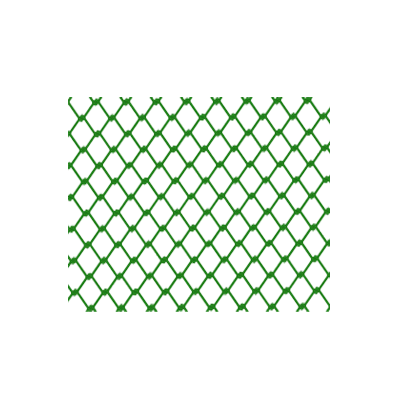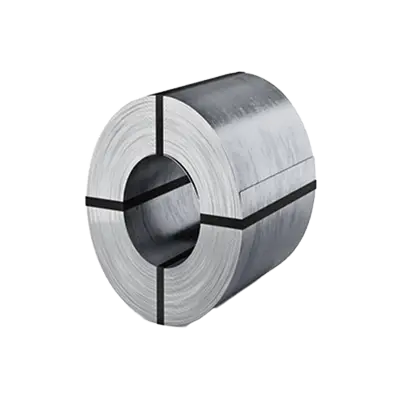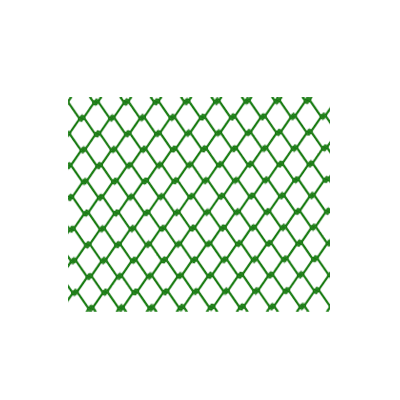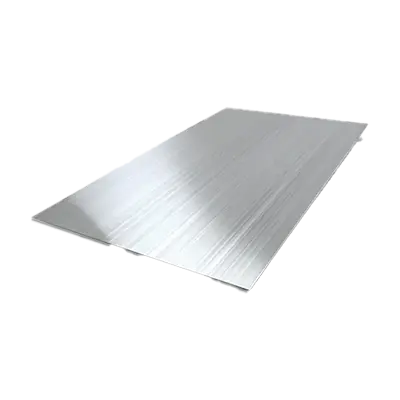Call +(254) 703 030 000 / 751 483 999 / 721 704 777
- Home
- Steel
- Carbon Steel Flat Products
- Coated
.....Read More
Frequently Asked Questions
What is coated steel and how is it made?
Coated steel is a type of steel that has been covered with a layer of material to enhance its properties, such as corrosion resistance, aesthetic appeal, or durability. The coating process involves applying a protective layer to the steel surface, which can be metallic, organic, or a combination of both.
The most common types of coated steel include:
1. **Galvanized Steel**: This involves coating steel with a layer of zinc. The most prevalent method is hot-dip galvanizing, where steel is submerged in molten zinc, forming a robust, corrosion-resistant layer. Electro-galvanizing is another method, using an electric current to apply zinc.
2. **Galvalume Steel**: This is coated with an alloy of zinc and aluminum, offering enhanced corrosion resistance and heat reflectivity. It is typically applied using a hot-dip process.
3. **Aluminized Steel**: Steel is coated with an aluminum-silicon alloy, providing excellent heat resistance and corrosion protection. This is often used in high-temperature applications.
4. **Tinplate**: Steel is coated with a thin layer of tin, primarily used in food and beverage containers due to its non-toxic nature and resistance to corrosion.
5. **Organic Coatings**: These include paint, plastic, or powder coatings applied to steel surfaces. They provide aesthetic appeal and additional protection against environmental factors.
The coating process generally involves surface preparation, such as cleaning and pre-treatment, to ensure proper adhesion. The coating is then applied through various methods, including dipping, spraying, or electroplating, depending on the type of coating and desired properties.
Coated steel is widely used in construction, automotive, appliances, and packaging industries due to its enhanced durability, longevity, and aesthetic qualities.
What are the benefits of using coated steel?
Coated steel offers several benefits that enhance its performance and longevity in various applications. Firstly, it provides superior corrosion resistance, protecting the underlying steel from environmental factors such as moisture, chemicals, and salt, which can lead to rust and degradation. This makes coated steel ideal for use in harsh environments, including marine and industrial settings.
Secondly, coated steel often has improved aesthetic appeal. Coatings can be applied in a variety of colors and finishes, allowing for greater design flexibility and the ability to match specific architectural or branding requirements. This is particularly beneficial in construction and consumer goods industries where appearance is important.
Thirdly, coated steel can offer enhanced durability and strength. Certain coatings, such as those with zinc or aluminum, can provide additional structural integrity, making the steel more resistant to physical damage and wear over time. This extends the lifespan of the steel, reducing the need for frequent replacements and maintenance.
Additionally, coated steel can offer thermal and electrical insulation properties, depending on the type of coating used. This can be advantageous in applications where temperature regulation or electrical conductivity is a concern.
Coated steel is also environmentally friendly in some cases. For example, coatings can be designed to be recyclable or to reduce the environmental impact of the steel production process. This aligns with increasing global emphasis on sustainability and eco-friendly materials.
Finally, the use of coated steel can lead to cost savings. The extended lifespan, reduced maintenance needs, and potential for energy savings due to insulation properties can lower overall costs in the long term, making it a cost-effective choice for many industries.
What types of coatings are available for steel?
Steel can be coated with various materials to enhance its properties, such as corrosion resistance, wear resistance, and aesthetic appeal. Here are some common types of coatings for steel:
1. **Galvanizing**: This involves applying a layer of zinc to steel to protect it from corrosion. The most common method is hot-dip galvanizing, where steel is submerged in molten zinc.
2. **Powder Coating**: A dry powder is electrostatically applied to steel and then cured under heat. This provides a durable, corrosion-resistant finish available in various colors.
3. **Paint Coatings**: Paints are applied to steel surfaces to provide a protective and decorative finish. They can be water-based, solvent-based, or epoxy-based, depending on the application requirements.
4. **Epoxy Coatings**: These are thermosetting polymers that provide excellent adhesion, chemical resistance, and durability. They are often used in industrial and marine environments.
5. **Polyurethane Coatings**: Known for their flexibility and abrasion resistance, these coatings are used in environments where steel is exposed to harsh conditions.
6. **Ceramic Coatings**: These provide high-temperature resistance and are often used in applications like exhaust systems and industrial machinery.
7. **Anodizing**: Although primarily used for aluminum, anodizing can be applied to steel to increase corrosion resistance and surface hardness.
8. **Electroplating**: This process involves depositing a thin layer of metal, such as chromium, nickel, or copper, onto steel to improve its appearance and resistance to corrosion.
9. **Metallic Coatings**: These include coatings like aluminizing, where aluminum is applied to steel to enhance its heat and corrosion resistance.
10. **Polymer Coatings**: These include Teflon and other fluoropolymers that provide non-stick, low-friction surfaces.
Each coating type is selected based on the specific requirements of the application, including environmental conditions, desired lifespan, and cost considerations.
How does galvanized steel differ from other coated steels?
Galvanized steel differs from other coated steels primarily in its coating material and the method of application. Galvanization involves applying a protective layer of zinc to steel to prevent rusting. This is typically done through a process called hot-dip galvanizing, where steel is submerged in molten zinc, forming a metallurgical bond. The zinc coating acts as a sacrificial anode, meaning it will corrode before the underlying steel, providing long-term protection even if the surface is scratched.
In contrast, other coated steels may use different materials such as aluminum, tin, or organic coatings like paint or powder. For example, aluminized steel is coated with an aluminum-silicon alloy, offering excellent heat resistance and corrosion protection, particularly in high-temperature environments. Tin-plated steel, often used in food packaging, provides a non-toxic, corrosion-resistant surface.
The application methods for these coatings also vary. Electroplating, for instance, is a common method for applying tin or zinc coatings, involving the use of an electric current to deposit the metal onto the steel surface. Organic coatings are typically applied through spraying or dipping processes.
Each type of coated steel offers distinct advantages depending on the intended application. Galvanized steel is favored for its durability and cost-effectiveness in construction, automotive, and outdoor applications. Aluminized steel is preferred for heat exchangers and exhaust systems due to its thermal properties. Tin-plated steel is ideal for food and beverage containers due to its safety and corrosion resistance.
In summary, the primary differences lie in the coating material, application method, and the specific properties and advantages each type of coated steel offers for various applications.
What are the common applications of coated steel?
Coated steel is widely used across various industries due to its enhanced properties such as corrosion resistance, aesthetic appeal, and durability. Here are some common applications:
1. **Construction**: Coated steel is extensively used in the construction industry for roofing, wall cladding, and structural components. Galvanized and pre-painted steel sheets are popular for their durability and resistance to weathering, making them ideal for both residential and commercial buildings.
2. **Automotive**: In the automotive sector, coated steel is used for manufacturing car bodies and parts. The coating provides protection against rust and corrosion, extending the lifespan of vehicles. Electro-galvanized and hot-dip galvanized steels are commonly used for this purpose.
3. **Appliances**: Household appliances such as refrigerators, washing machines, and ovens often use coated steel for their outer panels. The coating not only provides a sleek finish but also protects against scratches and corrosion, ensuring longevity.
4. **Packaging**: Coated steel is used in the packaging industry, particularly for food and beverage cans. Tinplate and tin-free steel are common choices due to their excellent barrier properties, preventing contamination and preserving the contents.
5. **Infrastructure**: In infrastructure projects, coated steel is used for bridges, pipelines, and utility poles. The coating protects against environmental factors, reducing maintenance costs and extending the service life of these structures.
6. **Agriculture**: Coated steel is used in agricultural equipment and structures, such as silos and barns, where resistance to harsh weather and chemicals is crucial.
7. **Energy**: In the energy sector, coated steel is used for wind turbines, solar panel frames, and oil and gas pipelines. The coating ensures durability and resistance to environmental stressors.
These applications highlight the versatility and importance of coated steel in various sectors, driven by its protective and aesthetic qualities.
How does coated steel improve corrosion resistance?
Coated steel improves corrosion resistance by providing a protective barrier that prevents environmental elements such as moisture, oxygen, and salts from reaching the steel surface. This barrier can be achieved through various types of coatings, each offering distinct mechanisms of protection:
1. **Metallic Coatings**: These include zinc (galvanization), aluminum, and tin coatings. Zinc, for example, offers sacrificial protection; it corrodes preferentially to steel, thereby protecting the underlying metal. Aluminum coatings form a stable oxide layer that acts as a barrier to further corrosion.
2. **Organic Coatings**: Paints, varnishes, and powder coatings fall into this category. They create a physical barrier that isolates the steel from corrosive agents. Additionally, these coatings can be formulated with corrosion inhibitors that provide extra protection.
3. **Inorganic Coatings**: These include ceramic and glass coatings, which offer excellent resistance to high temperatures and chemical attack. They form a hard, impermeable layer that prevents corrosive substances from reaching the steel.
4. **Conversion Coatings**: Processes like phosphating and chromating chemically alter the steel surface to enhance adhesion of subsequent coatings and provide a degree of corrosion resistance on their own.
5. **Duplex Systems**: Combining metallic and organic coatings, such as painting over galvanized steel, offers synergistic protection. The metallic layer provides sacrificial protection, while the organic layer acts as a barrier.
By employing these coatings, the lifespan of steel structures and components is significantly extended, reducing maintenance costs and improving safety and reliability in various applications.
What factors should be considered when choosing a coating for steel?
When choosing a coating for steel, several factors must be considered to ensure optimal performance and longevity:
1. **Corrosion Resistance**: Evaluate the environmental conditions the steel will be exposed to, such as humidity, salinity, and chemical exposure. Choose a coating that provides adequate protection against these elements.
2. **Mechanical Properties**: Consider the mechanical stresses the coated steel will endure, including abrasion, impact, and wear. The coating should be durable enough to withstand these forces.
3. **Adhesion**: The coating must adhere well to the steel surface. Surface preparation, such as cleaning and priming, is crucial to enhance adhesion.
4. **Application Method**: Consider the feasibility and cost of the application process, whether it be spraying, dipping, or brushing. The method should be suitable for the size and shape of the steel structure.
5. **Curing Time**: The time required for the coating to cure can impact project timelines. Choose a coating with a curing time that aligns with your schedule.
6. **Temperature Resistance**: If the steel will be exposed to extreme temperatures, select a coating that can withstand thermal expansion and contraction without degrading.
7. **Aesthetic Requirements**: Consider the desired appearance, including color and gloss. Some coatings offer decorative finishes in addition to protection.
8. **Regulatory Compliance**: Ensure the coating complies with environmental and safety regulations, particularly regarding volatile organic compounds (VOCs) and hazardous materials.
9. **Cost**: Balance the initial cost of the coating with its expected lifespan and maintenance requirements. A more expensive coating may offer better long-term value.
10. **Maintenance and Repair**: Consider the ease of maintenance and the ability to repair the coating if damaged.
11. **Compatibility**: Ensure the coating is compatible with any existing coatings or treatments on the steel.
By carefully evaluating these factors, you can select a coating that meets the specific needs of your steel application.






